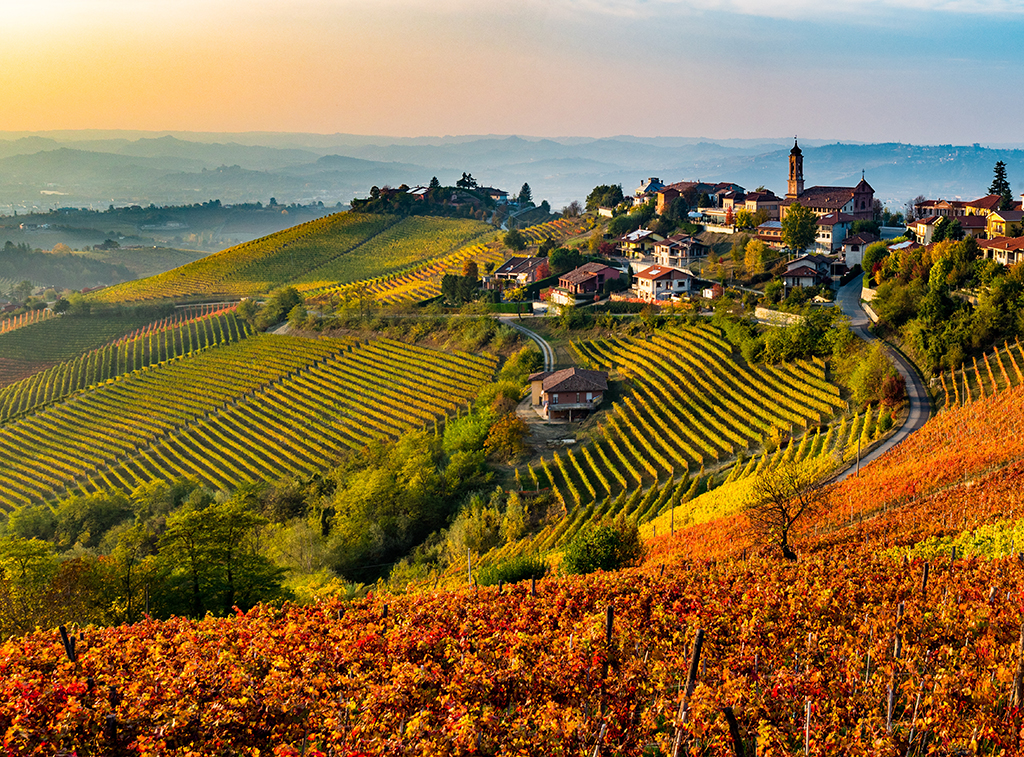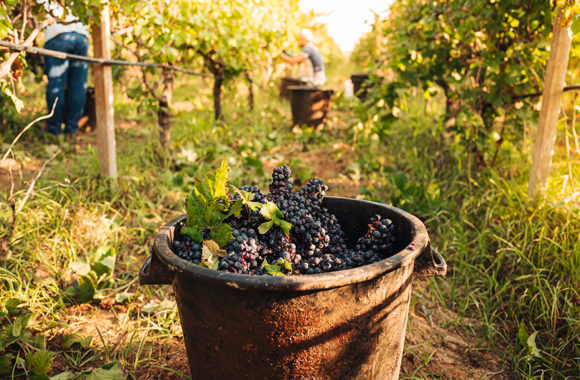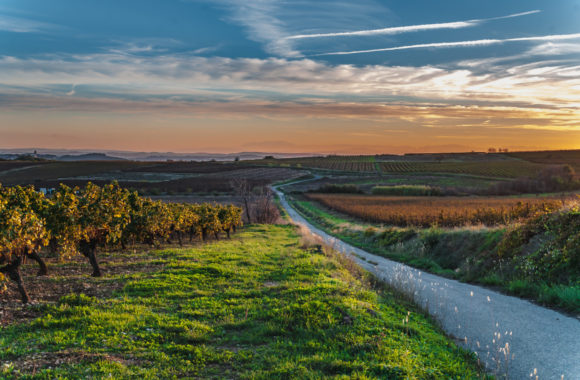
Tasting Piemonte: Day Two
· Henry Chambers Henry Chambers on
“Barolo the brand might be well-established but the individual growers are yet to be discovered.”
This was my first trip to Piemonte and the beauty and history of it all firmly put me in my place. So too did the endless twisting complexity of its hillside vineyards. But there was at least some reassurance to be found in its relative smallness of size. Barolo the brand might be extremely well-established, but the region itself is less than 2,000 hectares, and the individual growers that make up this brand yet to be discovered.
To make sense of hectares: Château Lafite is 112, while Tignanello in Tuscany is 130 and Vega Sicilia in the Ribera del Duero is 210… The heart of Burgundy, meaning just the Côte de Nuits and the Côte de Beaune, totals about 5,300 and is therefore the natural comparison, both in size and numerous other ways too.
Seeing the vineyards in person and speaking to producers in their wineries was an incomparable experience. Terroir is an over relied upon word to indicate geographical factors influencing the final taste of the wine. (Often used when there is no real understanding of how!) But in Piemonte there is simply no getting away from this concept. Differences of aspect, elevation, soil type are just the beginning, and in the hands of skilful winemakers the vineyards here speak with brilliantly clear voice, particularly in a vintage like 2019.
Our first appointment on day two was at Castello di Verduno, who take a traditional approach to winemaking; evident in the proud heritage on their labels. Outstanding holdings across Barolo and Barbaresco are vinified parcel by parcel to retain their innate characters. Only large Slavonian oak botti are used to keep the influence of wood to a minimum. The focus is on balance over extraction. Tannins are always extremely fine and well judged, and flavours and textures often have something stony about them. Winemaker Mario Andrion has a fantastic natural sensitivity, and the wines are a masterclass in purity and finesse.
Our first tasting of the day was their famous Barbaresco pair of Rabajá and Rabajá-Bas, which were split in 2008. Rabajá at lower altitude has density of structure and darker fruit, while the increased elevation and western exposition of Rabajá-Bas gives a kiss of red fruit and an ethereal quality to the wine. Both super expressive in 2019, you could not ask for better demonstrations of vineyard character.
This was repeated across all the other wines which we tasted with Marcella Burlotto, who oversees this historic estate on behalf of her family. A special mention must go to their Barolo Monvigliero 2018 – which is released this year as a non-Riserva. Marcella was clearly bemused that 2018 has been talked down as a lesser vintage by some. Anyone that is fortunate enough to taste this wine will see why. The finish on their 2018 “non-Riserva” is showstopping.
We travelled from Verduno in the North of Barolo, through the town of Alba, across to Barbaresco for our next appointment at Paitin. We started with a survey of their Serraboella vineyard, which fans out on a hillside directly beneath the winery, before a tour of the historic cellar and winery. Giovanni Pasquero-Elia was our guide, and he forms a triumvirate at this estate with his brother Silvano, and son Luca. Recent history has seen them acquire new Barbaresco Crus Faset and Basarin (Luca’s projects) and there is a palpable sense of energy about the future.
Giovanni is thoughtful and measured, much like the wines produced at Paitin. Though they experimented with rotofermenters and barriques in the 90s, the style is resolutely elegant. Wines are beautifully translucent, hightoned in their aromatics, often statuesque, with biting acidity that drives through the palate.
We sampled quite a lot of Freisa in our time in Piemonte, much of which was middling. Paitin’s offering was a cut above: cool, crunchy, precise, with a snap of cranberry fruit. Their Langhe Nebbiolo ‘Starda’ was possibly the most serious Langhe we tasted and clearly exceptional value. Moving on to the single Crus and quality kicks up higher. My notes become verbose: “Pinot like perfume. Gorgeous rose, strawberry, truffle notes in the back… Lovely softness to the fruit, tension to the palate” “Complexity and beauty on the nose. Vibrancy and richness of fruit”, etc.
We arrived later that afternoon at Diego Conterno to find the most exquisite panorama of the whole trip. I suppose locals must get used to it at some point.
The heart of this 8.5ha property in Monforte d’Alba was carved out of Conterno-Fantino in 2000, when Diego decided to sell his shares and set up for himself, taking with him 2ha of Ginestra – a Grand Cru if ever there was one. Stefano joined his father in 2010, as the work was simply too much for one person alone. Together they produce benchmark wines of the region. Working with large botti, including several Stockingers, though often fermenting first in steel to ensure purity and precision, these are notably deep, dark, and rounded expressions of Barolo, with flashes of blood orange and salted liquorice.
We talk of the power of Monforte, but what does that mean? Very broadly, the compacted nature of the soils in this area (and in Serralunga) tends to produce wines of structure and power, whereas the looser soils of La Morra (and Verduno) tend to produce more aromatically open wines, often with a floral touch and more in the red fruits than the black fruits.
The 2019s at Diego Conterno are superb, with the vibrant acidities harmonising with the assertive but well-proportioned tannins. There have been tweaks in recent vintages, with vineyard holdings parcelled up depending on differences of exposition and altitude, with some fruit moved from the Crus into the Barolo Classico, to find the best expression possible. Le Coste di Monforte was a personal highlight. Directly open to the cool Alta Langa winds, and at an altitude of 400 metres, it is a dense wine but with tremendous vibrancy. From the junior wines, the Dolcetto also jumped out with its purity of blackberry and bramble fruit as did the Langhe Nebbiolo and the Barbera. Honestly, I was impressed with everything we tasted here, bravo!
Our final appointment of the day was minutes away, and it was a good thing we had the time, because the brilliant and hugely generous Paolo Boffa at Amalia had organised a deep dive into his Bussia and Le Coste di Monforte, with side-by-side tasting of vintages 2016, 2017, 2018 and 2019. Having the opportunity to taste the vintages and the vineyards like this made it clear why these are consistently some of the best value single Cru Barolo that Jeroboams offers.
Since forming the estate in 2003, Paolo has judiciously been making changes to find the style that truly represents Amalia. In 2018 he moved over to working with large format oak for his Barolo, to reduce the imprint of wood, preferring the richness which comes from smaller barriques for his excellent Barbera. The fine-tuning also continues in the vineyards, where from 2022 he will be fully certified organic.
His 2018 Bussia, which is produced from the lieu-dit Vigna Fantini – right at the top of the Cru at 450 metres altitude and southwest facing, was one of my favourite wines at our Piemonte tasting in 2022 and it was fascinating to taste the different characters it exemplifies in different vintages. The transition from 2016 to 2019 also shows the wine becoming more finessed and chiselled, yet while still retaining its captivatingly open and spicy perfume. Bussia is a big cru, but when you know where to look, the rewards are well worth it!
We finished with the Rossese Bianco in vintages 2021, 2019 and 2016, which was a great revelation. It blossoms from a relatively tight and textured, citrussy white wine into something rich and honeyed, without missing a beat. If you can manage to age it even just two to three years, the rewards are seriously worth it.
And that was it. All in all, a very impressive and inspiring day of tasting.
One last general impression. It can only be a matter of time before more people better understand this region. When they do, access to the best wines will become more complicated. My advice is to get stuck in while you can – quality is at an all-time high. As we like to say, your future self will thank you!







